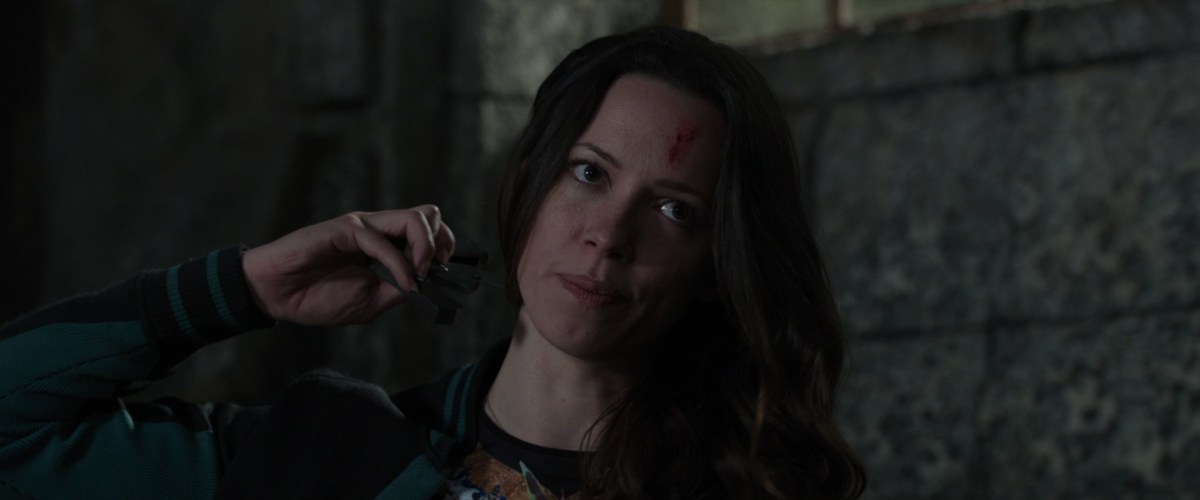Shane Black, director of Iron Man 3, had a chat with Uproxx where they touched upon that third installment in the Tony Stark saga, and shared a very intriguing little tidbit about the movie’s villain, Aldrich Killian. According to the interview, Killian wasn’t originally supposed to be the ultimate villain of the movie; it was actually supposed to be a woman. The idea was that it would be a Remington Steele-type of reveal where a woman is revealed to have been pulling the strings connected to the male villain all along. Unfortunately, that wasn’t to be, as Marvel corporate felt that a female villain toy just wouldn’t sell. Yup. Toys and merchandising dictated a creative change, one that Black felt powerless to fight.
In reply to a question about working with Marvel and Kevin Feige, Black said, “We replaced a lot of things. The plot went this way and that way. Stéphanie Szostak’s character was bigger at one point and we reduced it. Rebecca Hall’s character was bigger at one point and we reduced it.” When prodded further, Black continued, “All I’ll say is this, on the record: There was an early draft of Iron Man 3 where we had an inkling of a problem. Which is that we had a female character who was the villain in the draft. We had finished the script and we were given a no-holds-barred memo saying that cannot stand and we’ve changed our minds because, after consulting, we’ve decided that toy won’t sell as well if it’s a female.”
While I’m sure changes of this caliber are routine for Hollywood, there’s an interesting set of intertwined politics at play here. First of all: the belief that toys based on female characters won’t sell is one that I think is well and truly debunked–at least, that seems to be the case these days. I absolutely realize that Iron Man 3 came out in 2013, long before the “Where’s Black Widow” and “Where’s Rey” campaigns of 2015. The movie industry was well lost in the throes of not giving two cares about who ended up on a toy or not. But basing your decision to change the entire creative angle of a story based on how well you’re going to sell toys is putting the cart before the horse, isn’t it? It’s backwards.
That apparently didn’t matter to Marvel. The only thing that seemed to matter was the bottom line on the spreadsheet. Black explained, “New York called and said, ‘That’s money out of our bank.’ In the earlier draft, the woman was essentially Killian–and they didn’t want a female Killian, they wanted a male Killian. I liked the idea, like Remington Steele, you think it’s the man but at the end, the woman has been running the whole show. They just said, ‘no way.'” And, to be honest, the other female characters in Iron Man 3 also ended up with a pretty raw deal. As Black mentioned, Szostak’s character was reduced. The death of Hall’s character, Maya Hansen, felt particularly egregious, seeing as how she’s effectively fridged right in front of Stark. Black never mentioned whether the villain was going to be any of the characters we’d already seen in the movie, but Hansen may have been a pretty compelling choice in that regard.
The thought process that led Marvel to believe a female villain was unmarketable is a big problem, especially when it comes to representation. Just as we really need more female heroes, we need more female villains. Moreover, we need female villains who aren’t just lumped into crazy or unstable stereotypes. As Comics Alliance’s Juliet Kahn explained in an article about good girl role models, female characters (specifically heroines) need to be afforded the latitude to be as tragic, flawed, pained, angry, and/or ugly as their male counterparts. In the case of Iron Man 3, we’re talking about villains, who are decidedly different from heroes, but the conversation still remains mostly the same.
You see, when we talk about representation, we have to talk about more than just numbers. The quality of representation is dependent upon the variety and assortment of roles within those numbers as well. We don’t have any idea of how well a female villain would have been handled had that gone through (and we never will know), but all the same: we deserve to be afforded the chance to fail, as well. Point is, we need variance, we need variety in roles, not just number. It’s nice to think that we can have this conversation about quality over quantity now (at least, for cis, white, able-bodied women), but it goes to show how far we still have yet to go.
—The Mary Sue has a strict comment policy that forbids, but is not limited to, personal insults toward anyone, hate speech, and trolling.—
Follow The Mary Sue on Twitter, Facebook, Tumblr, Pinterest, & Google+.









Published: May 16, 2016 02:30 pm